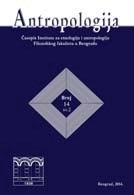JANUSOVO LICE MIZOGINIJE
The Janus Face of Misogyny
Imaginary autonomies and symbolic-political meanings of female body in the Middle Ages and Renaissance
Author(s): Nada SekulićSubject(s): Gender history, Middle Ages
Published by: Институт за етнологију и антропологију
Keywords: symbolic and political meaning of the female body; witch hunt; Renaissance; Middle Ages
Summary/Abstract: The paper analyzes the descriptions of the female body, given in the Middle Ages and the Renaissance in the framework of the misogynic philosophy of the corporeality, rude physical practices and violent methods of regulating female bodies, reflecting the ambivalent social boundaries, statuses, roles and prestige that belonged to women. The main gynecological texts and official papers that represent medical knowledge were designed just for men, and deliberately excluded women, expressing a strong need to establish social control over them at the end of the Middle Ages, standardizing prejudice and violence as legitimate social, religious and medical treatment of women. At the time of the Inquisition, it was necessary to establish the boundary between men as those who produce knowledge about the female body and women as objects of knowledge, in the relations in which women’s bodies should be fixed in such a way to strengthen male authority. It is necessary to place the study of women’s corporeality in the broader framework of the research of the relationship between the medical explanations of the functioning of the female body, misogyny and violence as a constituent part of social reproduction.
Journal: Antropologija
- Issue Year: 16/2016
- Issue No: 1
- Page Range: 53-71
- Page Count: 19
- Language: English

